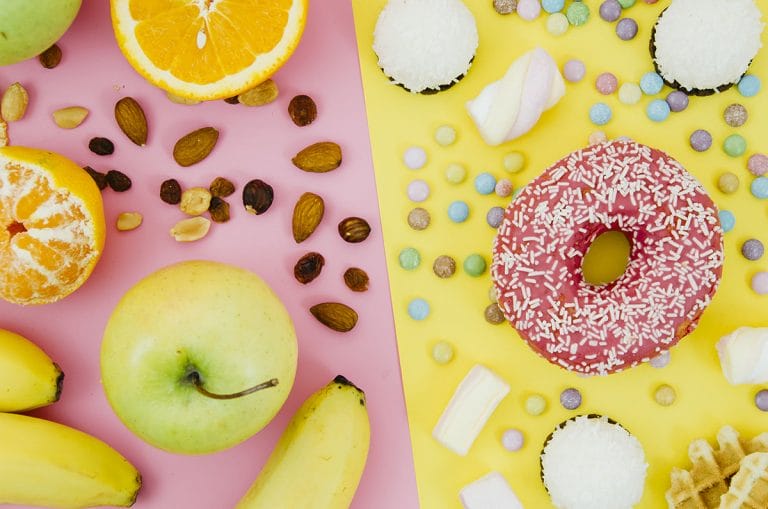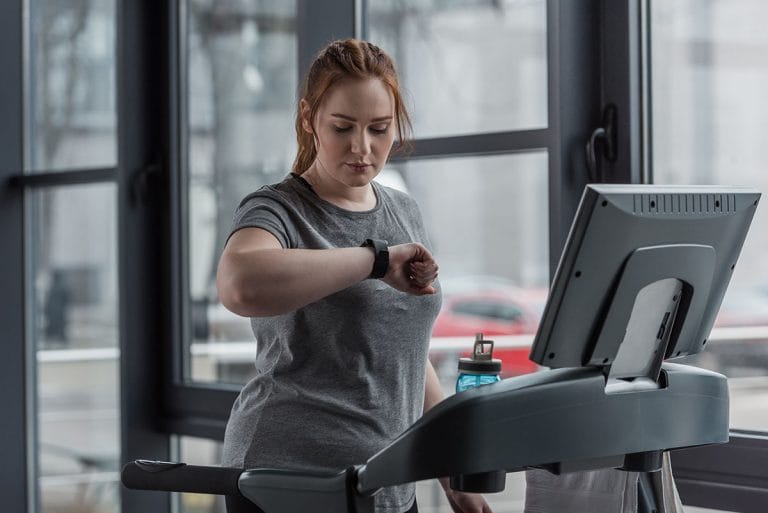At the heart of health and wellbeing, we find two key players: nutrition and physical activity. UCSD’s Center for Healthy Eating and Activity Research has dedicated countless hours to understanding the science behind these elements, and today, we’ll take a dive into their findings, ensuring that even a 10th grader can appreciate the importance of that salad and morning jog!
The Unveiling of Physical Activity’s Wonders
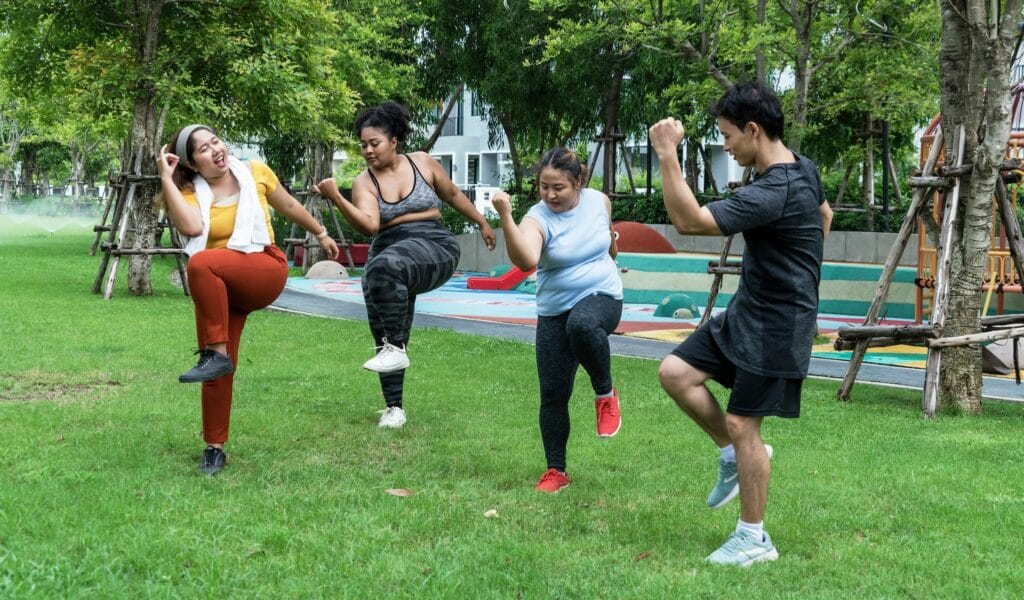
The Lifeline to Good Health
Physical activity is more than just an avenue to lose weight and keep fit; it’s a shield against some of the most common health problems. Here’s why it’s a vital component of health:
- Disease Prevention: As highlighted by the National Institute of Health, an active lifestyle can be your defense against daunting health issues. Cardiovascular diseases, which include heart attacks and strokes, are less common among those who engage in regular physical activity. High blood pressure, often labeled the ‘silent killer’, can be kept at bay with exercises like brisk walking. Surprisingly, our exercise habits can influence our chances of getting cancer. Engaging in regular physical activity has been linked to a lower risk of certain cancers, particularly colon and breast cancer.[KB1]
- Cognition: Exercise is the only thing you can do to improve your brain functioning. Research shows that exercise can affect “neuroplasticity”, which can improve cognitive performance. At this time, we know that physical activity can increase academic achievement in children and can improve learning and memory, attention, and executive functioning, as well as prevent cognitive decline in older adults, which reduces risk of developing dementia.
- Mood: Physical activity can reduce anxiety, depression, and negative mood, and alleviate symptoms of low self-esteem
- Strength and Endurance: Aerobic exercises, such as jogging or cycling, improve the efficiency of our heart and lungs. But to ensure overall physical prowess, muscle strengthening is crucial. When we talk about muscle strengthening, we refer to exercises that make our muscles do more work than usual. This not only improves muscle mass but also enhances bone density, which is vital for preventing osteoporosis.
- Beneficial for All Ages: The best part? Age is just a number when it comes to the benefits of physical activity. Older adults, often prone to a range of ailments, can fortify their health and boost their quality of life by staying active. Activities tailored to their physical capacity can help in maintaining mobility, agility, and mental well-being.
The Dangers of a Sedentary Lifestyle
On the flip side, physical inactivity is a silent threat. Being sedentary or inactive has its repercussions:
- Weight Issues: A lack of physical activity is a direct ticket to unwanted weight gain. As we burn fewer calories, the unburned ones get stored as fat.
- Rising Health Risks: Watching TV, working at a desk for hours, or any prolonged sitting can escalate the risk of heart disease and diabetes. In essence, the more hours we spend inactive, the closer we move towards potential health threats, including premature death.
A Simple Exercise Routine
To help kickstart your journey, here’s a basic routine. Remember to warm up before starting!
Warm-up (5 minutes)
- Spot jogging
- Arm circles
- Leg swings
Aerobic Activity (10 minutes)
- Brisk Walking or Jogging: Start with a slow pace for the first 2 minutes, gradually increasing your speed. Ensure you maintain a steady pace, breathing evenly.
Muscle Strengthening (10 minutes)
- Push-ups: 3 sets of 10 (modify based on your fitness level, you can start with wall push-ups or knee push-ups)
- Squats: 3 sets of 10
- Plank: Hold for 20 seconds, rest for 10 seconds, and repeat 3 times.
Cool Down (5 minutes)
- Stretching major muscle groups: legs, arms, back, and neck.
Remember, the key is consistency. The benefits of exercise accumulate over time, so ensure you’re incorporating more physical activity into your daily life. Always consult with a healthcare provider before embarking on any new exercise regime.
The Profound Link: Physical Activity and Mental Health

Boosting Cognitive Abilities
At its core, the brain, like any other muscle, requires stimulation and exercise to remain healthy. Physical activity is one of the most effective means to provide this stimulation:
- Sharper Judgment: Engaging in consistent physical activity has been shown to enhance certain cognitive functions. For instance, activities that require coordination, rhythm, and strategy (like dancing or tennis) can bolster the brain’s processing speed and improve decision-making skills.
- Memory Enhancement: There are specific exercises, especially cardiovascular ones, that increase the heart rate and, in turn, promote blood flow to the brain. This enhanced circulation results in the release of hormones that foster the growth of brain cells, consequently aiding in memory and learning.
- Improved Performance: Physical activity has been shown to boost academic performance in children by enhancing learning, memory, attention, and executive functions. Moreover, it can mitigate cognitive decline in older adults, decreasing the risk of dementia. Additionally, regular exercise helps alleviate symptoms of anxiety, depression, negative mood, and low self-esteem.
Elevating Mood and Emotional Well-being
The mental benefits of exercise go beyond just cognitive enhancement:
- Natural Mood Elevator: When you engage in physical activity, your body releases endorphins, often referred to as ‘feel-good’ hormones. These act as natural painkillers and mood elevators, alleviating feelings of stress and sparking a sense of pleasure.
- Battle Against Depression: Several studies have underscored the positive effects of regular exercise in combating symptoms of depression. In some cases, consistent physical activity has been as effective as antidepressant medications for some people. The reason? Exercise promotes neural growth, reduces inflammation, and fosters a calm, positive environment within the brain.
- A Sense of Accomplishment: Completing a workout or achieving a physical milestone, no matter how big or small, provides a sense of achievement. This boosts self-confidence and self-worth, factors that play a pivotal role in mental well-being.
Quality Sleep: A Gift of Physical Activity
The connection between physical activity and sleep is intriguing:
- Faster Sleep Onset: After a session of physical exertion, the body needs time to recuperate and repair. This natural demand can promote faster sleep onset. Simply put, after exercising, you’re likely to fall asleep quicker.
- Deep Sleep Phase: Physical activity can increase the proportion of deep sleep you get during your sleep cycle. Deep sleep is crucial for immune function, cardiac health, and managing stress and anxiety.
- Regulating Sleep Patterns: Engaging in regular physical activity, especially in the morning or afternoon, can reset the sleep-wake cycle by raising the body’s core temperature a few hours later. As the body cools down, this can prompt feelings of drowsiness and help initiate sleep.
In essence, physical activity is not just about building muscles or enhancing stamina; it’s a comprehensive tool that nurtures the mind just as effectively as it does the body.
Delving Deeper into CHEAR’s Perspective on Healthy Eating
The Symbiotic Relationship: Exercise and Nutrition
A well-rounded approach to health encompasses both physical activity and nutrition. They are like two sides of the same coin, each complementing and amplifying the benefits of the other.
Optimized Results: The Engine and Its Fuel
Our bodies operate similarly to well-oiled machines. To keep them functioning efficiently, they require two primary things: a spark to ignite them and fuel to keep them running.
- Engine Mechanics: Every cell in our body is bustling with activity, executing myriad functions that keep us alive and thriving. Physical activities, from simple actions like walking or breathing to more intense activities like running or weightlifting, demand energy. This is where the analogy of exercise as the igniter or the ‘spark plug’ of our engine comes into play.
- High-Quality Fuel: Just as a vehicle runs best on high-quality fuel, our bodies thrive on nutrient-dense foods. Foods rich in essential vitamins, minerals, and other vital nutrients provide the energy required to drive our daily physical activities. More than just giving energy, they also play a role in repairing and building tissues, especially post-exercise. This means that after an intense workout, consuming nutrient-rich food can help muscles recover more rapidly, reduce fatigue, and prepare the body for the next bout of physical activity.
Disease Prevention: The Armor of Nutrition

Nature has gifted us with a plethora of foods that do more than just satiate our hunger. They also act as protective shields against numerous health adversities.
- Defensive Eating: Incorporating a diverse range of fresh fruits, crisp vegetables, lean proteins, and whole grains means you’re supplying your body with antioxidants, fiber, healthy fats, and essential amino acids. These nutrients help counteract oxidative stress, reduce inflammation, and repair cellular damage.
- Heart and Vascular Health: Certain foods play a significant role in heart health. For instance, omega-3 fatty acids found in fish can lower the risk of coronary heart disease. Similarly, potassium-rich foods like bananas help regulate blood pressure.
- Guarding Vital Organs: The kidneys filter out waste and extra fluid from the body, while the digestive system breaks down food into usable nutrients. A diet low in processed salts, sugars, and unhealthy fats can prevent undue stress on these systems, minimizing the risk of related diseases.
Weight Management: The Caloric Balance Act
Our body weight is, in many ways, a reflection of the balance between the calories we consume and those we burn in everyday activities.
- Understanding Caloric Balance: If you consume more calories than you burn, your body stores the excess as fat. On the contrary, if you burn more calories than you consume, your body taps into its fat reserves for energy, leading to weight loss.
- Holistic Diet for Balance: By choosing a diet filled with nutrient-dense foods, you’re ensuring each calorie consumed is packed with beneficial nutrients. Such foods are often more filling, reducing overall calorie intake.
- Efficient Caloric Utilization: When combined with regular exercise, a balanced diet ensures the calories consumed are efficiently used for energy, muscle growth, and cellular repair. This synergy minimizes the chances of excess calorie storage as fat, helping in weight maintenance or loss.
In essence, when we treat our bodies with respect, offering them the best in nutrition and physical activity, they respond by offering us vitality, longevity, and resilience against diseases.
CHEAR’s Recommended Healthy Recipes
To incorporate these nutritional insights into daily life, here are three heart-healthy recipes inspired by CHEAR’s research on healthy eating:
Quinoa and Black Bean Salad
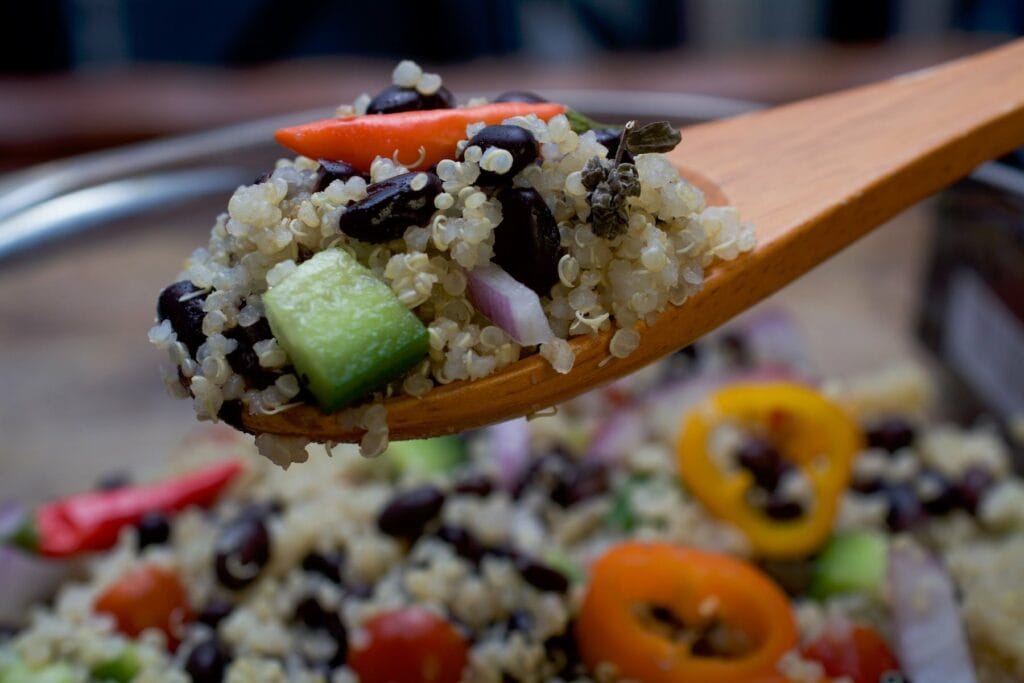
Ingredients:
- 1 cup cooked quinoa
- 1 cup canned black beans, rinsed and drained
- 1 red bell pepper, diced
- 1/2 cup fresh corn kernels
- 2 green onions, chopped
- 1/4 cup fresh cilantro, chopped
- 2 tbsp olive oil
- Juice of 1 lime
- Salt and pepper to taste
Instructions:
- In a large bowl, combine quinoa, black beans, red bell pepper, corn, green onions, and cilantro.
- In a separate small bowl, whisk together olive oil, lime juice, salt, and pepper.
- Pour the dressing over the quinoa mixture and toss until everything is well combined. Refrigerate for 30 minutes before serving.
Grilled Lemon Herb Chicken
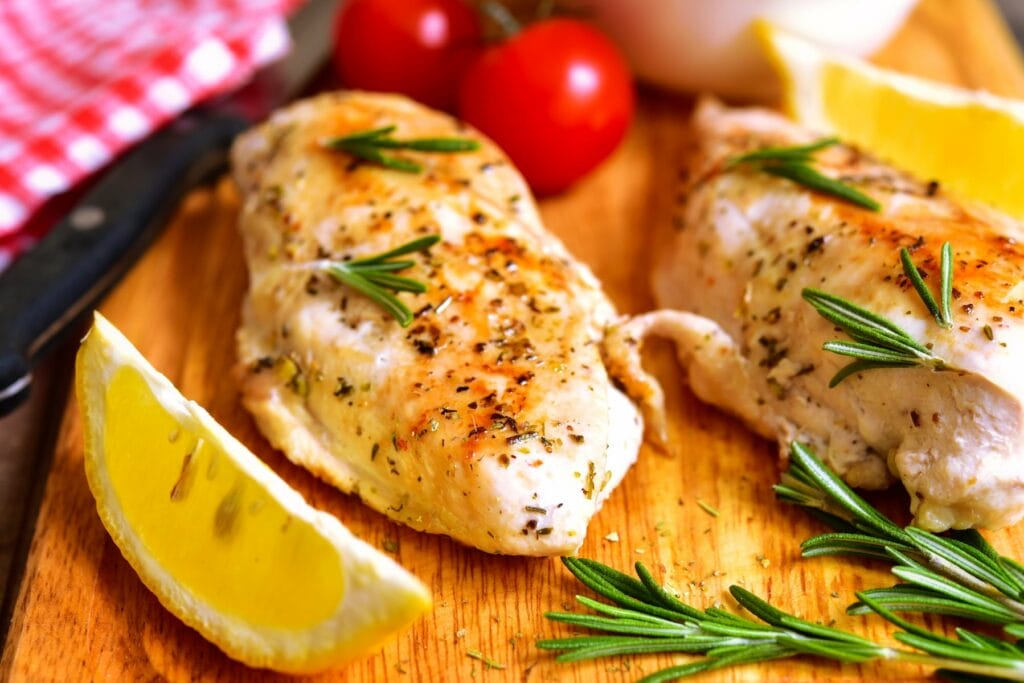
Ingredients:
- 4 boneless, skinless chicken breasts
- 3 tbsp olive oil
- Juice of 1 lemon
- 2 garlic cloves, minced
- 1 tsp dried oregano
- Salt and pepper to taste
Instructions:
- In a bowl, mix olive oil, lemon juice, garlic, oregano, salt, and pepper.
- Place chicken breasts in a dish and pour the marinade over them, ensuring they are well-coated. Let them marinate for at least 1 hour.
- Preheat grill to medium heat. Grill the chicken breasts for 6-7 minutes on each side or until they are thoroughly cooked.
Spinach and Berry Smoothie

Ingredients:
- 1 cup fresh spinach leaves
- 1/2 cup mixed berries (blueberries, strawberries, raspberries)
- 1 banana
- 1 cup unsweetened almond milk
- 1 tbsp chia seeds
- 1 tsp honey (optional)
Instructions:
- Combine all ingredients in a blender.
- Blend until smooth. Pour into a glass and enjoy!
Eating healthy is not about stringent dietary restrictions, staying unrealistically thin, or depriving yourself of the foods you love. It’s about feeling great, having more energy, and making food choices that sustain and enhance both physical and mental well-being.
A Holistic Approach to Health
A holistic approach to health transcends merely avoiding illness. It encompasses a broader view of well-being, addressing the physical, mental, emotional, and even social aspects of an individual’s life. By harmonizing these domains, we not only aim to live longer but, more importantly, to live better.
Integrating Activity into Everyday Life
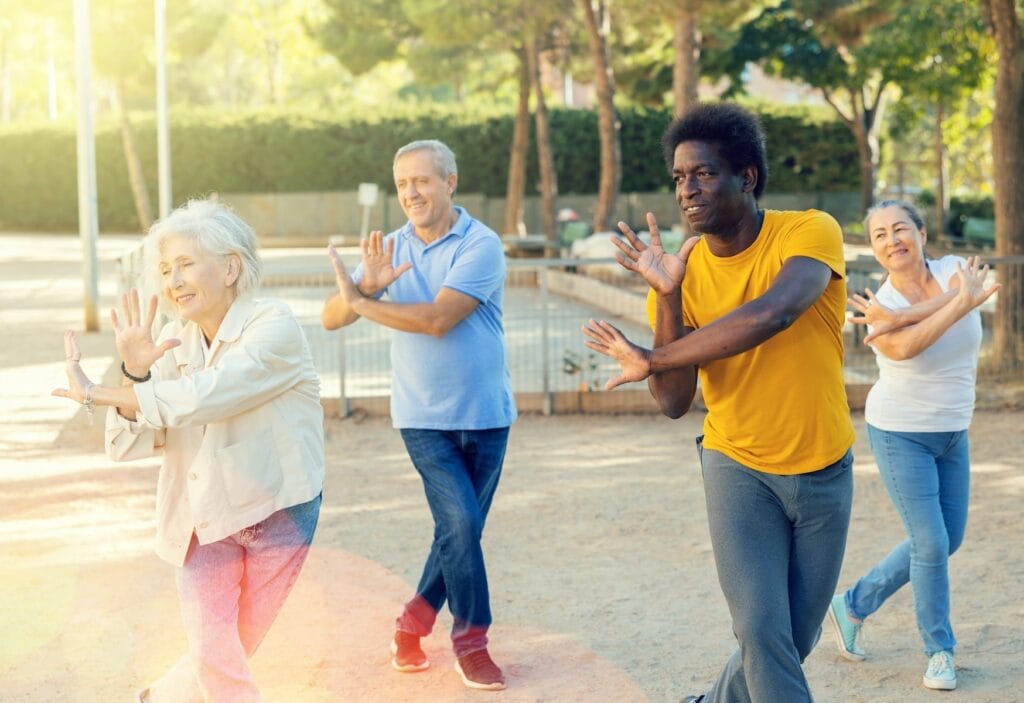
Our fast-paced, modern lifestyle often pushes physical activity to the backseat. However, it’s essential to recognize that maintaining physical activity isn’t always about gym memberships or marathon running. Everyday life offers numerous opportunities to stay physically active:
- Taking the Stairs: This simple choice, when done regularly, can be a great way to incorporate moderate-intensity activity into your day. Climbing stairs helps strengthen the leg muscles and increases cardiovascular endurance.
- Walking to work or school.
- Parking at the back of the parking lot and walking in.
- Dance Class: Dancing isn’t just a fun activity; it’s also a full-body workout. Whether it’s salsa, ballet, or hip-hop, dance class can improve flexibility, muscle strength, and bone density. Moreover, dancing has the added benefit of boosting mental well-being by reducing stress and increasing endorphin levels.
- Grocery Shopping on Foot: Walking to the grocery store and carrying bags back home serves as both aerobic exercise (from walking) and muscle strengthening (from lifting bags). Plus, it’s an environmentally friendly choice!
CHEAR’s Recommendations for a Balanced Lifestyle
Combining Aerobic and Muscle Strengthening Exercises:
- Aerobic Exercises: Activities like brisk walking, cycling, or swimming primarily target cardiovascular health, improving the efficiency of the heart and lungs. They also play a role in weight management and reducing the risk of chronic diseases.
- Muscle Strengthening Activities: Strength training, whether using body weight, resistance bands, or weights, is essential for maintaining muscle mass, especially as we age. Strengthening exercises also aid in improving bone density, reducing the risk of osteoporosis.
Following Physical Activity Guidelines:
CHEAR emphasizes the importance of adhering to physical activity guidelines. These typically recommend a certain number of hours or minutes of both aerobic and muscle-strengthening activities per week. By meeting or exceeding these physical fitness guidelines, individuals can ensure they receive the comprehensive health benefits of regular physical activity.
Healthy Eating Habits:
As previously discussed, exercise and diet are two sides of the same coin. CHEAR’s research highlights that while exercise is a cornerstone of physical health, it’s most effective when you exercise regularly paired with a nutritious, balanced diet. Proper nutrition ensures that the body has the necessary fuel to perform, recover, and thrive.
A Call to Action
Physical activity and healthy eating are more than just guidelines; they’re a roadmap to longevity, better quality of life, and improved mental health. So, the next time you ponder on how much physical activity is enough, remember, every step, every morsel counts.
Incorporate muscle-strengthening exercises, be it through strength training or everyday tasks. Balance it with moderate to vigorous intensity activity and complement it all with a healthy diet. With institutions like CHEAR at UCSD paving the path with their groundbreaking research, the journey to a healthier life becomes clearer.
In conclusion, a truly holistic approach to health recognizes that every choice, no matter how small it may seem, contributes to our overall well-being. By mindfully integrating moderate physical activity back into our daily routines and pairing it with a balanced diet, we pave the way for improved health outcomes and a healthier, happier life.
Sources:
- The Center for Healthy Eating and Activity Research at UCSD
- National Institute of Health on Physical Activity and Health
- American Heart Association on Sedentary Behaviours and Heart Disease
Note: As always, consult a healthcare provider before making drastic changes to your diet or exercise regime.


